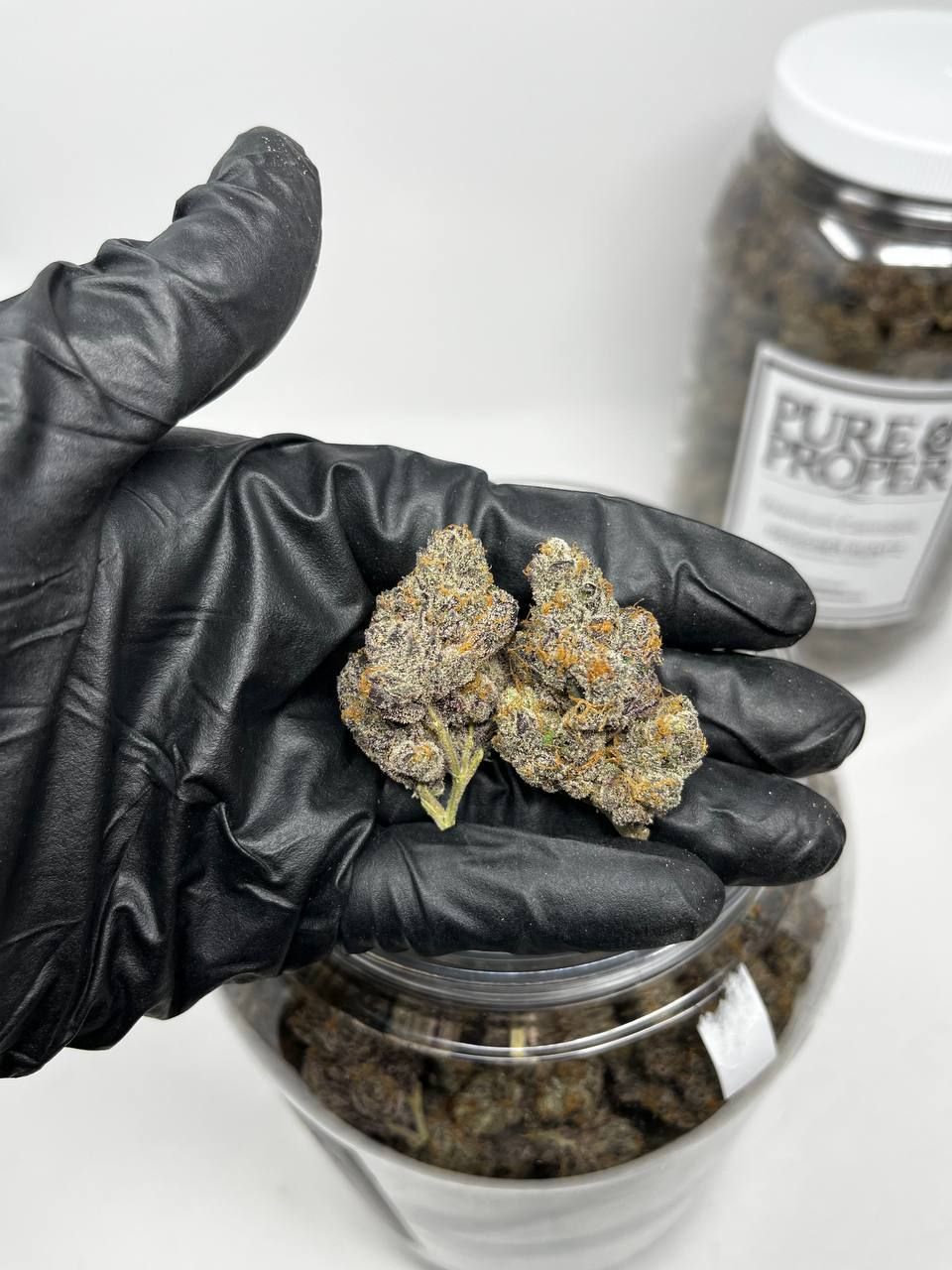Pure and Proper Strain
$380.00 – $1,200.00Price range: $380.00 through $1,200.00

Discover the Best Pure and Proper Strain for Sale – Enhance Your Experience
Explore our collection of top-quality pure and proper strain products for sale. Elevate your experience with the finest strains in the market.
Introduction to Pure and Proper Strain
The concept of a “pure and proper strain” is critical in various scientific disciplines, including genetics, microbiology, and agricultural science. A pure strain refers to a population of organisms that are genetically uniform, meaning they are derived from a single genetic lineage with minimal genetic variation. This homogeneity is essential for ensuring consistency and reliability in scientific experiments, agricultural practices, and industrial applications.
In the context of genetics, maintaining a pure strain is vital for research and development. For instance, in laboratory research, pure strains of bacteria or yeast are often used in experiments to ensure reproducibility of results. Any genetic variability could lead to inconsistent outcomes, undermining the validity of the research. Similarly, in microbiology, pure strains are crucial for producing vaccines, antibiotics, and other biotechnological products. The uniformity of the strain guarantees that the product will have the desired characteristics and effects every time it is produced.
In agricultural science, pure strains are equally important. Crop cultivation relies heavily on pure strains to produce high-yield, disease-resistant plants. For example, pure strains of wheat or corn are developed and propagated to ensure that each plant will exhibit the same desirable traits, such as drought tolerance or pest resistance. This consistency not only maximizes productivity but also helps in managing crop health more effectively. Livestock breeding follows a similar principle, where pure strains of animals are bred to enhance specific traits, such as milk production in dairy cows or growth rate in poultry.
Examples of pure strains can be found across these fields. In crop cultivation, the Green Revolution was significantly propelled by the development of pure strains of high-yielding rice and wheat. In livestock breeding, Holstein cows are a prime example of a pure strain bred specifically for high milk production. In laboratory research, strains like Escherichia coli K-12 are widely used because of their genetic uniformity and well-documented characteristics.
Understanding the importance and application of pure and proper strains underscores their role in advancing scientific knowledge, improving agricultural productivity, and ensuring the consistency of industrial products.
Importance of Pure Strains in Scientific Research
Pure strains are fundamental to scientific research, providing a reliable basis for experimental consistency and reproducibility. In various fields such as genetics, microbiology, and pharmaceuticals, the use of pure strains ensures that the results obtained are attributable to the variables being tested rather than to genetic or phenotypic differences among the organisms. This consistency is crucial for the validation of experimental findings and the advancement of scientific knowledge.
In genetics, pure strains enable researchers to study inheritance patterns and gene function without the confounding effects of genetic variation. For instance, the use of pure strains of model organisms like Drosophila melanogaster (fruit fly) or Mus musculus (house mouse) has been pivotal in uncovering the principles of Mendelian inheritance and the roles of specific genes in development and disease. These pure strains provide a stable genetic background, allowing for precise manipulation and observation of genetic modifications.
Microbiology also benefits significantly from the use of pure strains. In this field, pure bacterial or fungal strains are essential for studying pathogen behavior, antibiotic resistance, and the mechanisms of infection. For example, pure strains of Escherichia coli have been instrumental in research on bacterial conjugation and gene transfer. Without pure strains, the variability in microbial populations could lead to inconsistent results, impeding the identification of critical biological processes and the development of effective treatments.
In the pharmaceutical industry, pure strains are necessary for the development and testing of new drugs. Pure microbial cultures are used to produce consistent and high-quality compounds. Any contamination or genetic variation in these strains could affect drug efficacy and safety, leading to unreliable results and potentially harmful consequences. A notable case is the production of antibiotics like penicillin, which relies on specific strains of Penicillium fungi. The purity of these strains ensures the consistent production of the active pharmaceutical ingredient.
Overall, the use of pure strains in scientific research is indispensable. It ensures the accuracy, reproducibility, and reliability of experimental results, facilitating the advancement of knowledge and innovation across various scientific disciplines.
Methods for Maintaining Pure Strains
Maintaining pure strains is imperative for a variety of scientific, agricultural, and medical applications. Several techniques and best practices are employed to ensure the genetic purity of strains over successive generations. Among the most prevalent methods are selective breeding, cloning, and genetic engineering, each playing a pivotal role in preserving strain integrity.
Selective breeding involves choosing parent organisms with desirable traits to produce offspring that exhibit those same characteristics. This method requires meticulous planning and record-keeping to prevent the introduction of unwanted genetic variations. The main steps include isolating the strain, characterizing its genetic profile, and performing controlled matings. Regular monitoring through genetic testing is essential to ensure the strain retains its pure characteristics.
Cloning, another widely-used technique, involves producing genetically identical copies of an organism. This method is particularly effective for maintaining pure strains in plants and some animals. By using tissue cultures or somatic cell nuclear transfer, scientists can create clones that are genetically identical to the original specimen, thus preserving the strain’s genetic makeup.
Genetic engineering offers a more modern approach to maintaining pure strains. Techniques such as CRISPR-Cas9 allow for precise modifications at the DNA level, enabling the correction of mutations that may arise and ensuring the strain remains genetically stable. This method also allows for the introduction of specific genes to enhance desirable traits while maintaining overall genetic purity.
Despite these advanced methods, challenges such as genetic drift and contamination remain. Genetic drift, the random change in allele frequencies, can alter the genetic composition of a strain over time. To mitigate this, large population sizes and controlled breeding practices are recommended. Contamination with foreign genetic material is another significant concern, often addressed through stringent laboratory protocols, regular genetic audits, and the use of clean, sterile environments.
Overall, maintaining pure strains necessitates a comprehensive approach that combines traditional and cutting-edge techniques. Through careful planning, rigorous monitoring, and employing advanced genetic tools, the integrity of pure strains can be preserved, ensuring their continued utility for research and application.
Applications and Future Prospects of Pure Strains
Pure strains, characterized by their genetic uniformity, find extensive application across various industries, including agriculture, pharmaceuticals, and biotechnology. In agriculture, pure strains are pivotal in enhancing crop yields and improving resistance to diseases and pests. By leveraging genetically uniform plants, farmers can ensure consistent performance and maximize productivity. This is particularly crucial in the context of global food security, where stable and reliable food production is essential.
In the pharmaceutical industry, pure strains are instrumental in drug development and manufacturing. The homogeneity of these strains ensures the consistency and reliability of drug compounds, leading to more effective and predictable therapeutic outcomes. This is especially important in the production of biopharmaceuticals, where even minor genetic variations can significantly impact the efficacy and safety of the final product.
Biotechnology also benefits immensely from the use of pure strains. Techniques such as CRISPR (Clustered Regularly Interspaced Short Palindromic Repeats) enable precise genetic modifications, facilitating the development of pure strains with desirable traits. This has far-reaching implications, from creating crops with enhanced nutritional profiles to developing microorganisms capable of producing essential biofuels and bioplastics.
Looking ahead, the future prospects of pure strains are promising, with emerging trends in biotechnology paving the way for innovative applications. The integration of advanced genetic engineering techniques, such as CRISPR, holds the potential to revolutionize the development and maintenance of pure strains. This could lead to significant advancements in various fields, including agriculture, healthcare, and environmental sustainability.
The potential impact of these advancements extends beyond individual industries. For instance, the development of pure strains with improved yield and disease resistance could play a crucial role in addressing global food security challenges. Similarly, the ability to produce consistent and reliable pharmaceutical compounds could lead to more effective treatments for a range of diseases, ultimately improving public health outcomes. As research and technology continue to evolve, the applications and benefits of pure strains are likely to expand, offering new solutions to some of the world’s most pressing challenges.Pure and Proper Strain
| Weight | N/A |
|---|---|
| Quantity | Pound, half pound, quarter pound |
Reviews
There are no reviews yet.
Related products
Weed Strains
Weed Strains
Weed Strains
Weed Strains
Weed Strains
Weed Strains
Weed Strains














Be the first to review “Pure and Proper Strain”